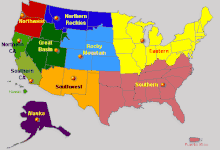2020 wildfire season
The 2020 wildfire season involves wildfires on multiple continents.
| 2020 wildfire season | |
|---|---|
| Statistics | |
| Date(s) | January–December 2020 |
| Season | |
← 2019
2021 → | |
Asia
- 2020 Uttarakhand forest fires, India
- 2020 Siberia wildfires, Russia
- In June, well inside the Arctic circle, Verkhoyansk hit a temperature of 100.4 °F (38.0 °C).[1] In Russia’s two easternmost districts, 18,591 distinct fires have consumed 14 million hectares (35 million acres).[2]
Fires are releasing record levels of carbon dioxide, partly because they are burning ancient peatlands that have been a carbon sink. A study published last month shows that northern peatlands could eventually shift from being a net sink for carbon to a net source of carbon, further accelerating climate change.
The unprecedented Arctic wildfires of 2019 and 2020 show that transformational shifts are already under way, says Thomas Smith, an environmental geographer at the London School of Economics and Political Science. "Alarming is the right term."[2]
- In September 2020 scientists warned that an "international effort is needed to manage a changing fire regime in the vulnerable Arctic", reporting that satellite data shows how the Arctic fire regime is changing.[3][4] On 3 September EU institutions reported that, according to satellite data, the Arctic fires already far surpassed the total of CO2 emissions for the 2019 season.[5]
- Syria:
Europe
North America
- United States
- 2020 Western United States wildfire season
- 2020 California wildfires, United States
- 2020 Nevada wildfires, United States
- 2020 New Mexico wildfires, United States
- 2020 Utah wildfires, United States
- 2020 Washington wildfires, United States
- 2020 Oregon wildfires, United States
- 2020 Colorado wildfires, United States.
- Year-to-date wildfire figures
- United States agencies stationed at the National Interagency Fire Center in Idaho maintain a "National Large Incident Year-to-Date Report" on wildfires, delineating 10 sub-national areas, aggregating the regional and national totals of burn size, fire suppression cost, and razed structure count, among other data. As of October 21, "Coordination Centers" of each geography report the following:[11]
- Note: Check primary sources for up-to-date statistics.

National Interagency Fire Center Geographic Area Coordination Centers
Coordination Center Acres Hectares Suppression Costs Structures Destroyed Alaska Interagency 171,045.7 69,219.7 $14,837,241.00 8 Northwest Area 1,925,434.2 779,195.6 $334,672,820.78 4,473 Northern California Area 3,961,089.6 1,602,996.1 $1,369,875,556.25 7,410 Southern California Area 1,241,246.5 502,314.6 $751,084,644.00 1,824 Northern Rockies 359,948.6 145,666.0 $71,770,047.00 222 Great Basin 891,689.5 360,853.9 $236,649,112.00 172 Southwest Area 1,036,287.6 419,370.7 $192,069,000.96 63 Rocky Mountain Area 818,608.6 331,279.1 $276,080,314.34 212 Eastern Area 10,508.4 4,252.6 $522,398.58 19 Southern Area 2,678,366.3 1,083,896.4 $14,692,891.11 313 Totals[lower-alpha 1] 13,094,224.9 5,299,044.8 $3,262,254,026.02 14,716
- Year-to-date totals as of October 21, 2020
South America
- 2020 Córdoba wildfires, Argentina
- 2020 Delta del Paraná wildfires, Argentina
- 2020 Amazon and Pantanal wildfires, Brazil
References
- Irfan, Umair (23 June 2020). "Why it's so damn hot in the Arctic right now". Vox.
- Witze, Alexandra (21 September 2020). "The Arctic is burning like never before — and that's bad news for climate change". Nature.
- "The Arctic is burning in a whole new way". phys.org. Retrieved 11 October 2020.
- McCarty, Jessica L.; Smith, Thomas E. L.; Turetsky, Merritt R. (October 2020). "Arctic fires re-emerging". Nature Geoscience. 13 (10): 658–660. doi:10.1038/s41561-020-00645-5. ISSN 1752-0908. Retrieved 11 October 2020.
- "Record CO2 emissions for Arctic wildfires: EU". phys.org. Retrieved 11 October 2020.
- "Al-Suwayda: Large areas of land engulfed in flames in southern Syria". syriahr.com. 10 May 2020.
- "Front Lines Aflame: Crop Fires Ravage Syria's Jazirah Region, Scorching Fields and Destroying Harvests". Syrians for Truth & Justice. 24 August 2020.
- "Syria overwhelmed by massive fires as large number people become displaced". almasdarnews.com. 6 September 2020.
- "Syria battles forest fires for seventh day straight". Arab News. 10 September 2020.
- "Syria: Wildfires burning in Latakia, Homs, and Tartous provinces October 10". garda.com. 10 October 2020.
- 2020 National Large Incident Year-to-Date Report (PDF). Geographic Area Coordination Center (Report). National Interagency Fire Center. September 18, 2020. Archived (PDF) from the original on October 22, 2019. Retrieved October 21, 2020.
This article is issued from Wikipedia. The text is licensed under Creative Commons - Attribution - Sharealike. Additional terms may apply for the media files.